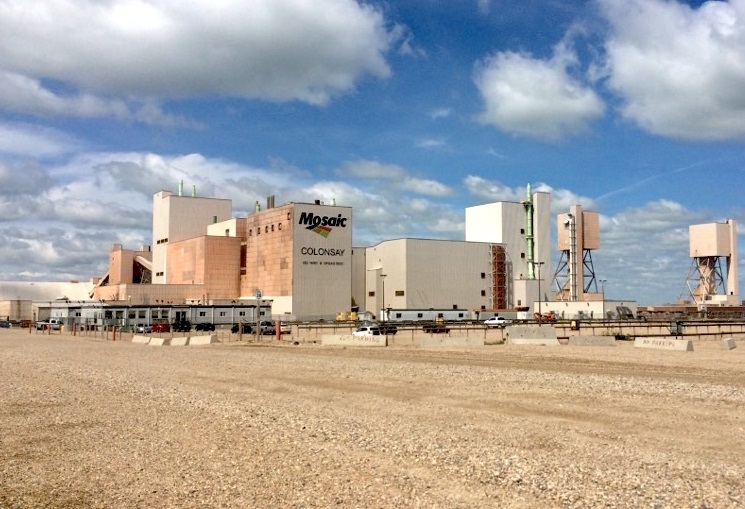Shifts being made by the Mosaic Company in terms of its potash production will see a resumption of operations at the Colonsay mine. A statement filed by the company on June 4 says that employees will be called back to work as soon as is practical.
The callback at Mosaic Colonsay is in response to the company’s announcement that it is immediately closing the shafts at its K1 and K2 mines in Esterhazy. Those closures had been in the works, but the plan was accelerated by nine months due to increasing volumes of brine inflows at the sites. The company has shifted resources to its K3 mineshaft with milling continuing at the K2 site.
Colonsay’s reopening will offset some of the lost production from the K1 and K2 shafts during the transition period. The move is also to improve the company’s position by increasing production to take advantage of what it sees as robust markets into the next year and in the future. The expectation is an additional 2 millions tonnes in annualized production over 2022 levels. Production will increase as Esterhazy K3 comes fully into service and Colonsay returns to production.
The company is also hoping to see cost recoveries from reduced brine flow management at Esterhazy. During the transition however, Mosaic anticipates a reduction of potash produced by around one million tonnes from July 2021 to March 2022.
"Mosaic has been managing inflows at Esterhazy since 1985, and has accelerated the development of the K3 shafts to allow for the ultimate closure of the K1 and K2 shafts," said Joc O'Rourke, President and Chief Executive Officer. "For the last decade, we've run scenarios that relate to the early closure of these shafts. As a result of that planning, we expect to end up in a stronger position than ever in 2022."
The Colonsay Mine had been idled since the summer of 2019 which was deemed to be indefinite in January of 2020.












